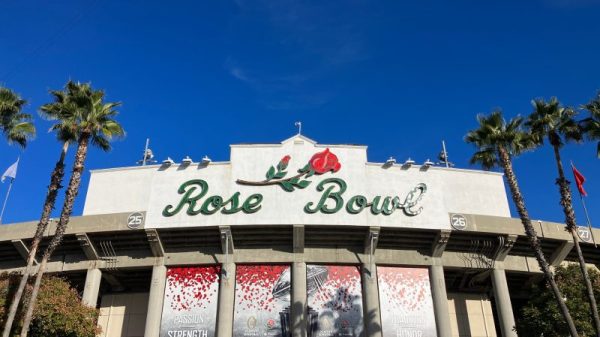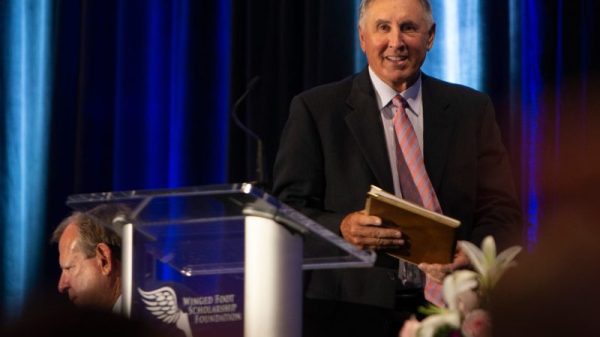Meeting with the leaders of Mexico and Canada on Tuesday, President Biden received an unexpected bit of praise.
“You, President Biden, you are the first president of the United States in a very long time that has not built even one meter of wall,” said Mexican President Andrés Manuel López Obrador. “And we thank you for that, sir — although some might not like it.”
Probably not the most politically helpful thing for López Obrador to have offered, given that Biden had just visited the border a few days prior, including a stretch in which a tall wall was in place. Biden’s trip was meant to send a message that he was taking the increase in people seeking entry to the United States seriously. Having the president of Mexico thank him for not doing the primary thing that his critics think he ought to be doing was a bit off message.
But it also raises a question: Is it true? Has there not been a meter of wall added under Biden?
You are no doubt aware that, under President Donald Trump, wall was added or improved along several hundred miles of the U.S.-Mexico border. He made that happen by declaring a national emergency in early 2019, allowing him to pull funding from other Defense Department projects to apply toward construction. (In June 2020, Trump faced criticism after it was revealed that only 16 miles of wall were installed in places that had not had any wall before. The rest of what was built was upgrading existing barriers.)
On Biden’s first day in office, he signed an executive order ending that emergency (after Democrats in Congress had been unable to get the votes to end it during Trump’s administration). New construction was put on pause.
A few months later, the Department of Homeland Security published a new border wall plan, given Biden’s prohibitions. It announced that new construction had stopped — “with the exception of activities related to ensuring project sites are safe and secure in accordance with the terms and conditions of the contracts.” What’s more, DHS would continue work on more than 13 miles of levee in the Rio Grande Valley, citing the part in Biden’s executive order focused on taking “urgent measures needed to avert immediate physical dangers.”
Last year, the Texas Tribune visited that levee project. It found newly constructed concrete walls topped with steel bollards. A representative of Customs and Border Protection (CBP) argued to the Tribune that this project was not a wall.
That said, the Biden administration had also announced in December 2021 that it would embark on a small-scale project to close “small gaps that remain open from prior construction activities” in the existing wall.
“The gaps, ranging from a few feet to 100 feet across, were left open as construction access areas but were not closed before Biden halted wall construction,” the Tribune reported.
In other words, however pedantic it might seem, Biden’s administration has in fact built new barriers along the border, regardless of how they’re categorized or how necessary they might be.
It’s also worth noting that, for all of his boasting about the amount of wall constructed under his administration, the change between 2016 and 2021 is fairly subtle. In 2017, Reveal News created a map of existing barriers, including barriers added after Congress passed a law in 2006 expanding the border wall. (This is a reason that apprehensions of people trying to enter the country between authorized ports of entry fell after that period.) CBP’s website, meanwhile, shows the existing “border wall system,” not all of it complete.
There are a lot of small areas in which existing gaps were closed, hard to see when we zoom out. The most notable difference is in the region indicated with the box: It’s the Laredo Project — and is flagged as “preconstruction” or “under contract” on the CBP’s map, as of October. In other words, it’s on hold.
It’s useful to note two things about the existing wall and about attempts to cross the border without authorization.
The first is that many of those included in CBP’s monthly data on apprehensions at the border are people stopped trying to enter at a port of entry. Sometimes these are people turning themselves in for asylum. Sometimes they have invalid visas. In November, about 1 in 9 of those “encountered” at the border (as the vernacular has it) were stopped at ports of entry.
The second is that the total number of people crossing the border remains lower than it was two decades ago. That’s in part because of the new barriers built after the passage of the 2006 law and in part because there are better surveillance mechanisms in place along the border.
Although FY22 hit a record for apprehensions, it was NOT a record for border crossings. Those records were set decades ago when avoiding arrest was easier. For example, in FY2000, DHS estimates there were 3.8 million crossings, including 2.1 million ‘successful unlawful entries.’ pic.twitter.com/fOze13w4iL
— Aaron Reichlin-Melnick (@ReichlinMelnick) October 25, 2022
As the American Immigration Council’s Aaron Reichlin-Melnick explained to The Washington Post last year, far more of those crossing into the country are successfully apprehended than in years past. That’s thanks to barriers, surveillance and the new pattern of people intentionally turning themselves in to seek asylum.
All of this yields a much blurrier picture than we might expect. Biden blocked Trump’s wall construction, but new barriers have gone up, however modestly. Even without the entire border barricaded off, the percentage of people who enter without being apprehended is lower than it was two decades ago. But the number of people seeking entry to the United States has soared since Biden took office.
Perhaps, then, Biden was content with López Obrador’s comment: It’s not often he gets praise for his handling of the border.



























